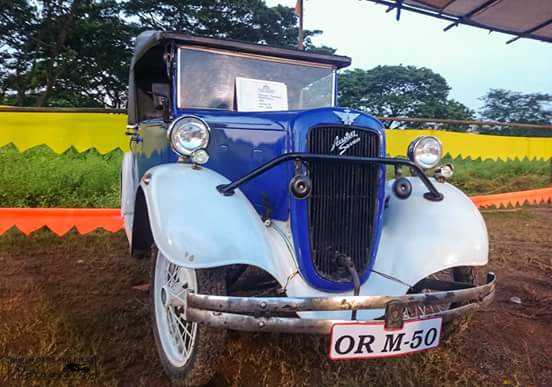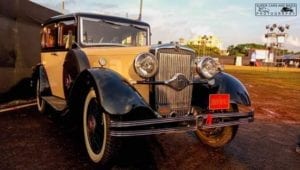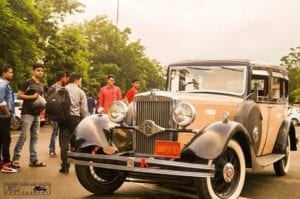Cars
The Classic Car Not Only Exists – Is Thriving These Days. Why?

In most cases, classic cars are rubbish. As James May once said, if they were any good, they’d still be made. Modern cars are faster, better handling, more reliable, more comfortable, cleaner, safer, more economical, and mostly cheaper to purchase, too. Basically, they’re better in just about every way. Yet despite this, the clearly inferior classic car not only still exists, but is positively thriving these days. Why?
There is no simple answer to this, but instead a combination of factors that each play a part.
First, there’s the design of the car itself. Classic cars were created very much in an analog world where designers used pencil and paper to create elegant shapes and flowing lines that would just not be possible on the computer-based design software used by modern car designers. Take the front wing of a Jaguar XK120 or the profile of a Ferrari 250 GTO, for example.
These designs are beautiful in every way, but are shapes that no modern designer would create nowadays—often, the way the metal frame underneath the bodywork used during the prototype stage (and even “bucks” used to shape bodywork) would have a direct influence on the car’s form.
These designs belong to a previous age—an age that many people fondly look back on, where designers were unencumbered by constraints such as crash tests, or aerodynamic drag coefficients, and instead created shapes that reflected the mood and trends of the time.
Modern production techniques have also removed much of the character from new cars. Mass production “systems” complete with soulless computers and robots on the production lines producing identical parts 24 hours a day, 7 days a week, are focussed on one thing: meeting the targets and quotas set by the car manufacturers to maximize efficiency and shareholder profit.
Classic car production, on the other hand, was largely a manual process performed by craftsmen using simple tools complemented by decades of experience to create panels by hand and by eye. The results of this are creations that have withstood the hardships of daily usage and weathered the passage of time. Not all are like this, of course. Some were very poorly designed, and built with even less care, but this is what separates classic cars from cars that are merely old.
Mechanically, they are quite different, too. Modern car engines are effectively a sealed unit, comprising of components that are largely unserviceable by the average person. Simply speaking, most components are controlled by a central electronic brain, which takes inputs from the driver, and then filters th em through systems such as the drive-by-wire throttle system, the traction control, electric steering, electronic clutch, the torque vectoring system, the ABS system, and so on.
em through systems such as the drive-by-wire throttle system, the traction control, electric steering, electronic clutch, the torque vectoring system, the ABS system, and so on.
All of these systems are designed to improve efficiency and safety, but on some level, they often rob the car of its feel and character. Older machines, in contrast, are the real deal. They are delicately balanced mechanical systems comprising hundreds or thousands of individual parts, all tuned to work together in harmony. The driver is a direct extension to the machine, providing inputs and receiving direct, unfiltered feedback through the controls, resulting in an authentic experience that is just not possible with the modern equivalent.
Driving a classic car requires a great deal of manual input from the driver, from adjusting the fuel/air mixture manually with the choke to selecting gears and controlling the engagement of power to the wheels with the clutch.
All this n eeds to be done in a way that gets the best out of the engine and transmission—but proper technique also protects the longevity of the aging components. Getting all this right is inherently more challenging than the modern equivalent of electronic ignition, automatic transmissions, and electronic driver aids, but far more rewarding and satisfying experience.
eeds to be done in a way that gets the best out of the engine and transmission—but proper technique also protects the longevity of the aging components. Getting all this right is inherently more challenging than the modern equivalent of electronic ignition, automatic transmissions, and electronic driver aids, but far more rewarding and satisfying experience.
Classic car owners mostly don’t embark upon a journey to reach a destination, but instead, the journey is the destination.
Nostalgia also plays a large part in the appeal of classics. They all have a history, be it interesting or not. Some have achieved great things in their lives, such as competing in and winning races, expeditions, or endurance events, whilst others have overcome challenges that are far more mundane but no less important to the owner. These machines were great enablers of a better life and provided mobility and freedom back in a time when such qualities were rare. They accompanied their owners on major life-events and consequently became indelibly associated with those events.
Classic cars all have a story to tell about what they have accomplished in their lives, where they have been, and wh y they are still in operation. The cracks in the leather or the scratches on the paint are seen by some as imperfections, but to aficionados of classic cars, these are a record of the car’s history, adding to its character and chronicling its life. Automobile manufacturers play heavily on the pedigree and heritage of their brands, but classic cars are the real-life objects that defined that heritage and established the reputation of the brand in the first place.
y they are still in operation. The cracks in the leather or the scratches on the paint are seen by some as imperfections, but to aficionados of classic cars, these are a record of the car’s history, adding to its character and chronicling its life. Automobile manufacturers play heavily on the pedigree and heritage of their brands, but classic cars are the real-life objects that defined that heritage and established the reputation of the brand in the first place.
Then there’s the individualism. Owning any new car is easy—all it takes is money, and with cheap credit and easy finance, even that is not very difficult any longer. Classic cars, however, are no longer in production and are therefore inherently limited in supply, consequently holding a far greater and ever-increasing level of exclusivity. No amount of money will get you a brand new Ferrari Daytona, for example, and even if you want an old one, you still have to find someone, somewhere who is willing to sell you theirs.
The greater effort of acquiring, owning, and maintaining a more exclusive product prompts questions of the owner’s passion for that product and his or her motivation for going to these additional lengths when owning a new car is so much simpler and easier. A culture has emerged surrounding classic cars, comprising of events such as classic rallies, road trips, historic racing, and classic car shows. Owners of classic cars gain great satisfaction from exhibiting their cars at these events and use them as a means to show off not only the car but also their own personality and taste.
questions of the owner’s passion for that product and his or her motivation for going to these additional lengths when owning a new car is so much simpler and easier. A culture has emerged surrounding classic cars, comprising of events such as classic rallies, road trips, historic racing, and classic car shows. Owners of classic cars gain great satisfaction from exhibiting their cars at these events and use them as a means to show off not only the car but also their own personality and taste.
Purchasers of modern cars typically calculate their ownership period of anything between 6 months and 5 years before they move on to something newer and better, but classic car owners see it the opposite way: the cars will exist beyond their ten ure, and they are merely temporary custodians of something that has a life beyond theirs.
ure, and they are merely temporary custodians of something that has a life beyond theirs.
So will this continue, or is it just a passing trend? New cars are likely to get better and better with each passing year, so the 3-year-old car that you have today is likely to be already outclassed by the new model just released.
Classic cars, however, compete on a completely different level. it’s not about efficiency and speed, but about the experience, style, exclusivity, and craftsmanship, all of which are universal and timeless. Classic cars not only appeal to car lovers, but also to lovers of engineering, design, art, and history.
That is the reason why people do, and always will love classic cars—and long may it continue.
Article Courtesy: Niralee Nirlipta, Senior PRO & Content Writer






























